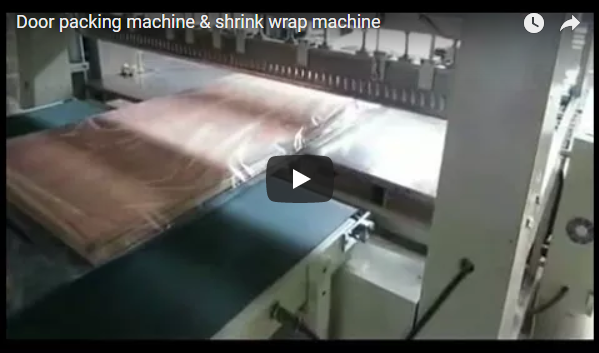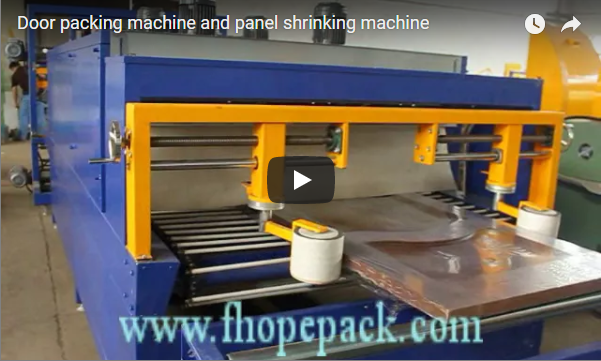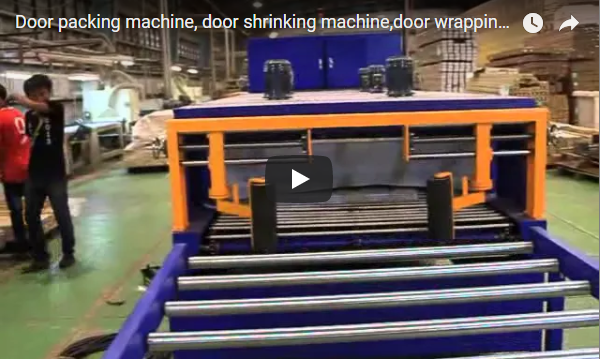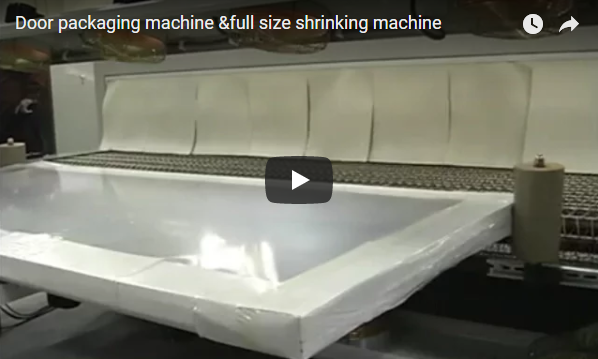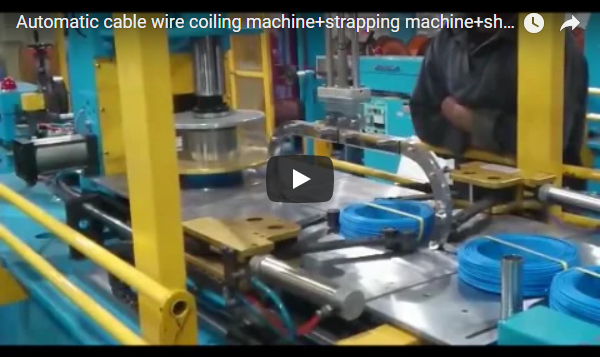Optimizing Door Manufacturing: The Technical Edge of Automatic Door Packing Lines
In today’s demanding manufacturing landscape, particularly within the construction and furniture sectors, achieving peak efficiency while upholding stringent safety standards is paramount. For producers of large-format items like doors, the packaging stage represents a critical bottleneck or a significant opportunity for optimization. The implementation of an Automatic Door Packing Line addresses this challenge directly, leveraging advanced automation to enhance productivity, ensure operator safety, and guarantee product integrity during transit and storage.
This technical overview delves into the operational principles, design considerations, key components, and performance metrics of automatic Door Packing Lines. We will explore the specific benefits they offer in terms of efficiency and safety, supported by technical data and insights into their structural design and user experience. This article aims to provide manufacturers and engineers with valuable information on integrating this technology effectively.
1. Understanding the Automatic Door Packing Line: Functionality and Design
An Automatic Door Packing Line is an integrated system engineered for the automated wrapping and packaging of doors varying in size, material (wood, steel, composite), and design. Its core objective is to apply a protective layer, typically shrink film, securely around the door, safeguarding it against environmental factors (dust, moisture) and physical damage (scratches, impacts) encountered during handling, shipping, and storage.
1.1 Core Components and Structure
A typical automatic door packing line comprises several key modules working in sequence:
- Infeed Conveyor: Usually a roller or belt conveyor designed for stable transport of doors. Often includes guides for proper alignment.
- Film Wrapping Station: Features film roll holders (often dual rolls for continuous operation), film cutting and sealing mechanisms (e.g., L-bar sealer, side sealer with hot knife or constant heat bar), and film tensioning systems.
- Shrink Tunnel: An insulated chamber equipped with heating elements (e.g., infrared, convection) and air circulation fans to distribute heat evenly. Precise temperature control (PID controllers) is crucial.
- Outfeed Conveyor: Transports the finished, shrink-wrapped door for removal or integration into further downstream automation (e.g., stacking, palletizing).
- Control System: Typically PLC-based (e.g., Siemens, Allen-Bradley) with an HMI (Human-Machine Interface) touchscreen for parameter setting, operation monitoring, and diagnostics.
The overall structure is typically robust steel framing, designed for industrial environments and ease of maintenance access.
1.2 The Imperative of Automation in Modern Packaging
Manual packaging of bulky items like doors is labor-intensive, slow, inconsistent, and poses ergonomic risks. The shift towards automation in packaging is driven by the need for:
- Increased Throughput: Meeting higher production volumes and market demand.
- Consistent Quality: Ensuring uniform wrap tension, seal integrity, and appearance.
- Reduced Operational Costs: Minimizing labor expenditure and material waste.
- Enhanced Safety: Reducing manual handling of heavy objects and interaction with moving machinery.
- Improved Product Protection: Minimizing damage rates during logistics.
2. Operational Workflow: A Step-by-Step Technical Breakdown
The process flow of an automatic door packing line is precisely orchestrated by the PLC system:
2.1 Manual or Automated Door Loading
The cycle begins with placing the door onto the infeed conveyor. While the video shows manual placement, fully automated lines can integrate directly with upstream processes via robotic arms or transfer systems. Accurate positioning is critical for subsequent stages.
2.2 Precision Film Application and Sealing
- Detection: Photocell sensors detect the door's leading and trailing edges to trigger the wrapping cycle.
- Wrapping: The door advances into the film curtain. Sealing bars (vertical and horizontal) activate pneumatically or electrically to enclose the door within the film bag. Advanced systems adjust sealing time and temperature based on film type and thickness.
- Sealing Technology: Common methods include thermal impulse sealing or constant heat sealing, ensuring strong, clean seals. Side seal systems allow for continuous wrapping of products with varying lengths.
2.3 Controlled Heat Shrinking
- Conveyance: The film-enclosed door is transported through the shrinking tunnel. Conveyor speed (often variable, e.g., 5-20 m/min) is synchronized with tunnel temperature and door size.
- Heating: Inside the tunnel, precisely controlled hot air (e.g., 150°C - 220°C, adjustable via HMI) circulates around the door. Heating elements and airflow patterns are designed for uniform heat exposure.
- Shrinking: The heat causes the polyolefin (POF) or polyethylene (PE) shrink film to contract tightly around the door's contours, creating a secure, protective, and visually appealing package.
2.4 Cooling and Discharge
Upon exiting the tunnel, the wrapped door may pass through a brief cooling zone (ambient or forced air) to set the film. It then reaches the outfeed conveyor for manual removal or automated transfer. Final quality checks can be performed here.
3. Technical Specifications and Performance Data
Understanding the key technical parameters is crucial for selecting and integrating an automatic door packing line:
- Packaging Capacity: Typically ranges from 60 to 120+ doors per hour, depending on door size, film type, and machine configuration.
- Maximum Door Dimensions:
- Length: e.g., up to 2500 mm
- Width: e.g., up to 1200 mm
- Height/Thickness: e.g., up to 100 mm (Specifications vary significantly by model)
- Applicable Film:
- Type: PE (Polyethylene), POF (Polyolefin) shrink film
- Thickness: Typically 25 - 100 microns
- Machine Dimensions (Example): Approx. 8000mm (L) x 2500mm (W) x 2200mm (H) (Varies greatly)
- Power Requirements: 3-Phase, 380V/50Hz or as per local standard. Total power consumption typically 20-60 kW (largely dependent on shrink tunnel size).
- Control System: PLC (e.g., Siemens S7 series) with Touchscreen HMI (e.g., 7-10 inch color display).
- Pneumatic System: Requires compressed air, typically 0.5-0.7 MPa (5-7 bar).
4. Quantifiable Benefits of Automation
Investing in an automatic door packing line yields significant operational advantages:
- Enhanced Throughput: Achieves speeds unattainable manually (e.g., 1-2 doors/minute vs. several minutes per door manually), directly increasing output capacity.
- Consistent Packaging Integrity: Automated control ensures uniform film tension, secure seals, and optimal shrink results, reducing packaging failures and product damage claims.
- Superior Product Protection: The tightly shrunk film provides excellent protection against dust, dirt, moisture, and surface abrasions during handling and transit.
- Labor Optimization: Reduces the need for manual labor in the packaging area (often requiring only one operator for supervision and loading/unloading), lowering direct labor costs and allowing staff reallocation to higher-value tasks.
- Material Savings: Precise film dispensing and cutting minimizes waste compared to manual methods. Optimal shrink parameters prevent film burn-through.
- Improved Ergonomics and Safety: Eliminates strenuous manual wrapping and lifting tasks, drastically reducing the risk of musculoskeletal injuries. Integrated safety features protect operators.
5. Advanced Safety Integration
Modern automatic door packing lines incorporate multiple safety systems compliant with international standards (e.g., CE, OSHA):
- Emergency Stop Circuits: Strategically placed E-stop buttons for immediate system shutdown.
- Safety Interlocks: Doors and access panels are equipped with interlocks that halt operation if opened.
- Light Curtains: Create safety zones around potentially hazardous areas (e.g., sealing mechanism), stopping the machine if the beam is interrupted.
- Sensor-Based Monitoring: Sensors detect product misfeeds, film jams, or obstructions, pausing the cycle to prevent damage or hazards.
- Thermal Protection: Over-temperature controls and proper insulation in the shrink tunnel prevent overheating and fire risks.
6. Customization and Integration Capabilities
These lines are rarely off-the-shelf solutions and offer significant customization:
- Size Handling: Adjustable guides, sealing frames, and tunnel apertures to accommodate a wide range of door dimensions.
- Film Handling: Options for different film types, thicknesses, automatic film splicing for continuous operation, and film perforation units (for air escape).
- Conveyor Systems: Customizable speeds, types (rollers, belts, chain), and integration with existing factory logistics (AGVs, robotic systems).
- Control System Integration: Can be integrated with plant-level MES or ERP systems for data logging, performance tracking, and remote diagnostics.
- Material Specific Adjustments: Parameter presets for different door materials (wood requiring gentler handling vs. robust steel doors).
7. Operator Experience and Maintenance Considerations
From a user perspective, modern lines emphasize ease of use and maintenance:
- Intuitive HMI: Touchscreen controls allow operators to easily set parameters (speed, temperature, sealing time), select recipes for different door types, and view diagnostics/alarms.
- Accessibility: Designed for easy access to key components like film rolls, sealing bars, and heating elements for routine maintenance (cleaning, blade replacement) and troubleshooting.
- Reliability: Robust construction and use of high-quality components minimize downtime. Preventative maintenance schedules are typically provided.
- Training: Requires initial operator training on safe operation, parameter adjustment, film loading, and basic troubleshooting.
8. Industries Benefiting from Automated Door Packaging
Beyond dedicated door manufacturers, these systems are valuable in:
- Window Manufacturing: Packaging large window units.
- Furniture Industry: Wrapping large flat-pack furniture components, tabletops, cabinet sides.
- Building Materials: Packaging panels, insulation boards, and other large, flat construction elements.
- Contract Packaging: Service providers handling packaging for various industries.
9. Conclusion: A Strategic Investment for Efficiency and Safety
The Automatic Door Packing Line represents a critical technological advancement for industries handling large panel-like products. By automating the wrapping and shrinking process, manufacturers can achieve substantial gains in operational efficiency, ensure consistent packaging quality, enhance product protection, and significantly improve workplace safety. The integration of sophisticated control systems, robust components, comprehensive safety features, and customization options makes these lines a strategic investment for companies aiming to optimize their end-of-line processes, reduce costs, and maintain a competitive edge in demanding markets. Evaluating specific technical specifications, throughput requirements, and integration needs is key to selecting the right system for maximizing ROI.

